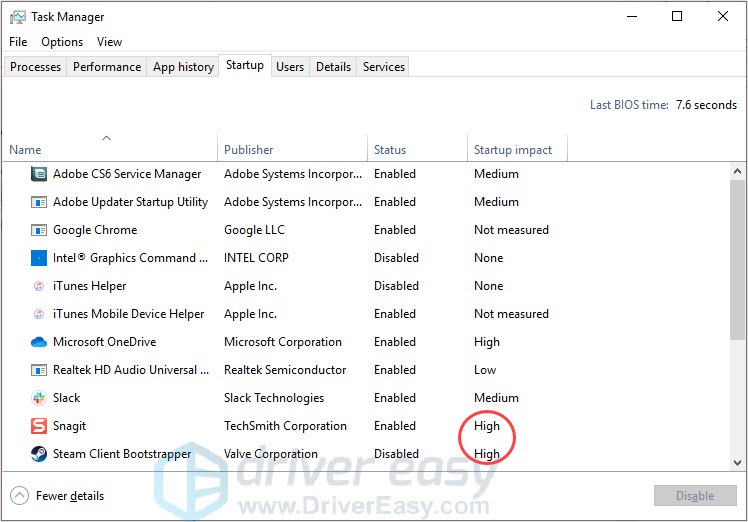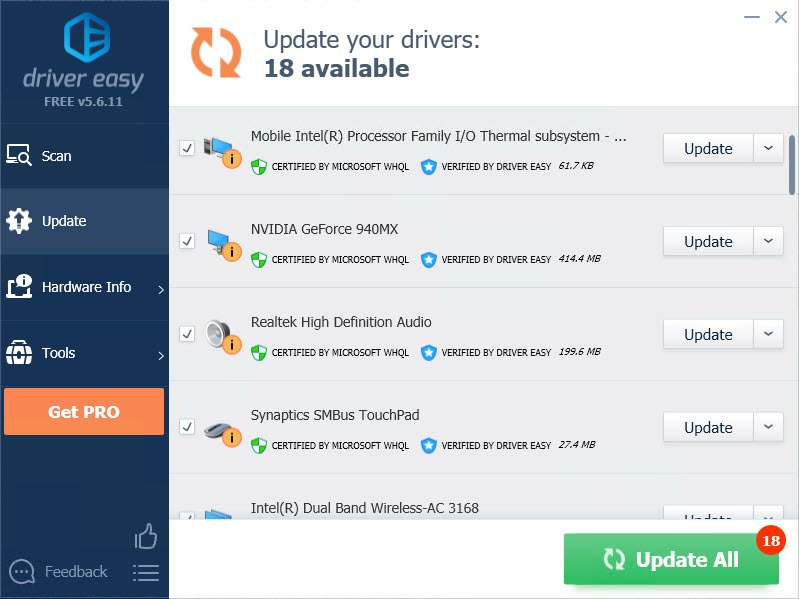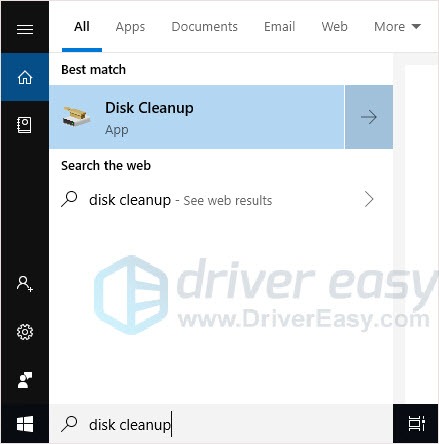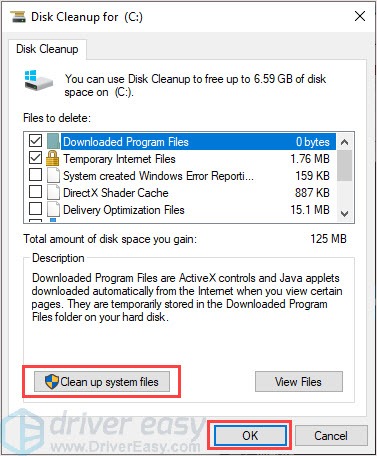If you’re tired waiting for your Windows 10 to boot, you’ll need this article to help. You will not be frustrated waiting for your PC to boot for a long time. Here we will show you some easy and helpful methods to speed up boot time for your Windows 10 PC.
How do I speed up Windows 10 boot time?
- Disable Fast Startup
- Disable Processes with High Startup Impact
- Update your graphics card driver
- Clean up your files
- Shorten the boot menu time
- Do a clean install of Windows 10
Method 1: Disable Fast Startup
The first quick and easy method to solve the problem is to disable Fast Startup on your Windows 10 device.
Fast Startup is a default enabled feature in Windows 10. It is supposed to reduce startup time by pre-loading some boot information before your PC shuts off. It works in a similar manner as Hibernation. But many users have reported it’s causing issues.
- Press the Windows logo key + Pause and click Control Panel Home.

- Change View by Large icons and click Power Options.

- Click Choose what the power button do.

- Click Change settings that are currently unavailable.

- Make sure you uncheck Turn on fast startup (recommended). Then click Save Changes.

- Reboot your Windows 10 device and check to see if it boots quickly. If you’re still experiencing a slow boot, you can move onto our next method.
Method 2: Disable Processes with High Startup Impact
Some unnecessary processes with high startup impact can make your Windows 10 computer boot slowly. You can disable those processes to fix your problem.
Note: Except for the crucial security software.
- On your keyboard, press Shift + Ctrl +Esc keys at the same time to open Task Manager.
- Click Startup and see what unnecessary processes are enabled with high startup impact.

- Choose the process and click Disable.

- Reboot your Windows 10 computer and check to see if it boots quickly. If it still boots slowly, you can move on to our third method.
Method 3: Update your graphics card driver
If there’re any old or corrupted drivers on your Windows 10 PC, this can cause your computer to boot slowly. You can update your device drivers to solve your problem.
You can do this manually by downloading the latest drivers from your graphics card manufacturer’s official website. You’ll need to find exactly the correct driver, though. If you’re not confident playing around with drivers manually, or if you want to save some time, you can use Driver Easy to do it automatically.
- Download and install Driver Easy.
- Run Driver Easy and click Scan Now button. Driver Easy will then scan your computer and detect any problem drivers. You sound driver is no exception.

- Click Update All to automatically download and install the correct version of all the drivers that are missing or out of date on your system (this requires the Pro version – you’ll be prompted to upgrade when you click Update All).
Note: You can do it for free if you like, but it’s partly manual.
- Reboot your Windows 10 computer and check to see if it boots quickly.
Method 4: Clean up your files
Clean up your files can release the space on your hard drive. More space on your hard drive can improve your computer performance and make it faster. To run Disk Cleanup is really an easy way to speed up your Windows 10 PC’s boot time.
- Type disk cleanup in the search box and press Enter.

- Press OK to delete files. Or you can click Clean up system files to do a further cleaning.

- Reboot your Windows 10 computer and check to see if it boots quickly.
Method 5: Shorten the boot menu time
By shortening the time of display list of operating systems, the Windows 10 boot time should be shortened. This is an easy way to speed up your PC’s boot time.
- Press the Windows logo key + Pause and click Advanced system settings.

- In the Advanced tab, click Settings under Startup and Recovery.

- Adjust the time in the Time to display list of operating systems and press OK.

- Reboot your Windows 10 computer and check to see if it boots quickly.
Method 6: Do a clean install of Windows 10
If none of the previous three tips worked, you can choose to do a clean install of Windows 10 on your computer.
See How to do a clean install of Windows 10.
Hopefully, by following the above methods, you’ll find a solution that works for you so your computer starts up quickly again.





